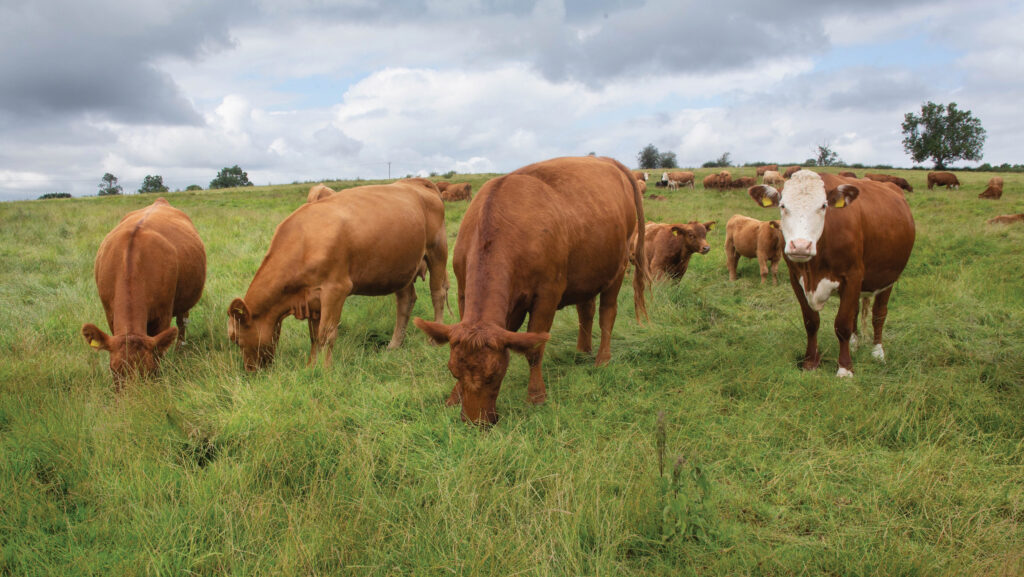Why growing more grass species helps cut feed costs
 © Tim Scrivener
© Tim Scrivener Improving productivity is key to increasing natural capital while building a more resilient grazing system on livestock farms.
This was the message from regenerative farming consultant Siobhan Griffin from Next Level Grazing in New Zealand.
“Productivity is not discussed much in regenerative agriculture, but it’s essential if we are going to heal the climate, she said.
See also: Organic mob grazing system cuts £380/livestock unit on estate
Siobhan has 15 years of hands-on experience of regenerative grazing, having transitioned her former organic dairy farm in New York State, from traditionally grazed perennial ryegrass and clover swards, to species-rich grassland managed regeneratively.
She encouraged diversity by extending recovery periods and increasing grazing heights and residuals “a little bit at a time” to a total increase of about 12.5cm over five years.
“There’s nothing sustainable about a farm that goes out of business. You always must prioritise animal performance,” she said, crediting the sward changes with reducing pests and improving cow health.
“We kept our grass growing in the summer once we had greater diversity with deeper tap roots.
“But it was the animal health improvements that were the driver of more profit,” she explains.
These included a 20% reduction in replacement rate, a 90% cut in lameness, and only one case of mastitis in 100 cows without using dry cow therapy.
Furthermore, soil organic matter lifted from 5.9% to 8.5%, and measurements in the top 15cm of the soil profile revealed the farm was sequestering 17.5t of carbon dioxide equivalent/ha a year.
Below, Siobahn gives advice on how farmers can build a resilient grazing system that maximises productivity.
Promote diversity
Improving grass biodiversity increases production.
One New Zealand study found that 16-species grass, grown without fertiliser, cut twice a year, grew more than two-species grass, receiving 200kg/ha of nitrogen and cut four times.
Improvements in diversity can be made by selectively grazing, non-selective trampling, and optimising pasture recovery periods.
Selective grazing
Allowing animals to selectively graze about half the forage volume improves animal performance compared to grazing down to a residual of 1,500kg of dry matter/ha.
Then, cows do not need to eat low enough to soiled grass or to pick up parasites.
The benefit is two-fold because leaving a higher residual means grass grows back faster.
“I recommend lifting residuals by only 100kg/ha a year. That way, farmers can still maintain quality.”
Set a precedent in the spring
Spring management dictates quality and quantity for the whole season. Increasing animal density at the height of the spring flush by splitting paddocks in half and moving stock more regularly (up to four times a day) aids non-selective trampling.
This fertilises the soil and promotes faster grass regrowth.
Siobahn advises keeping “grass green and growing” during the spring by using a holistic grazing plan to help achieve optimum recovery; avoid overgrazing or over-resting pasture.
Using a feed budget and grazing wedge alone places the herd on a round based on the amount of grass grown over previous months.
A well-monitored grazing plan, however, sets the round speed based on current (and anticipated) weather. This enables the farmer to be proactive in real time, she explained.
Instead of adjusting the grazing area daily according to the grass in the paddock, the grazing plan adjusts:
- The area included in the rotation for the month
- Stocking rate
- Supplement fed (forage or concentrates) or surplus grass harvested.
Non-selective trampling
Non-selective trampling “turbo-charges” productivity by getting nutrients cycling quicker and “pays carbon forward”.
Using taller species such as timothy and cocksfoot makes it easier for stock to trample grass into the soil and this creates a “megafauna fertiliser”. This extends the green or growing period, too.
“Productivity is important because the greener the grass is, the more carbon we pull out of the air and put in the soil.”
Optimise pasture recovery
Overgrazing in summer can reduce production by 50%, while prolonged recovery periods can also reduce productivity.
This is because there are fewer green leaves available to capture sunlight, which impairs photosynthesis.
“When plants are over-recovered, a seed head starts to form, or lower leaves turn yellow.
“We don’t like to see a thatch at the bottom because if everything is functioning, the soil biology should gobble it up.
“Optimum recovery depends on the class of stock, type of grasses you have and what you want to achieve.”
Optimising recovery times will also improve pasture diversity and discourage more vigorous species such as cocksfoot from shading out other plants.
She adds that monitoring the physiological recovery of plants by looking at the leaf stage is more important than plant height.
